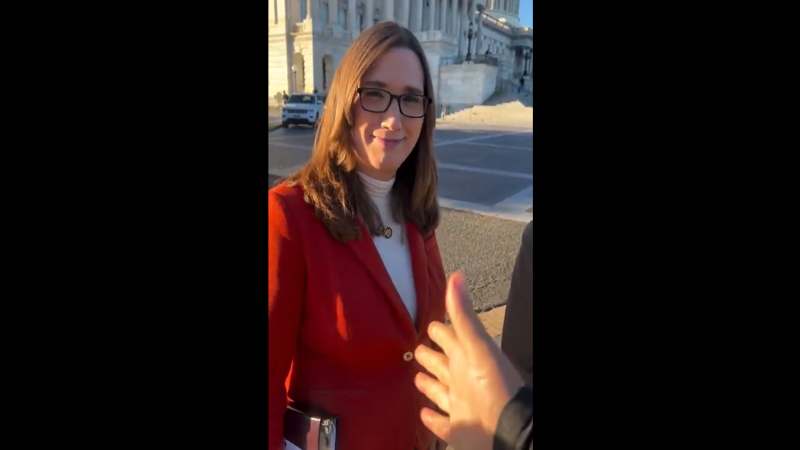 Image Credit: Galerie Bilderwelt / Contributor / Getty
Image Credit: Galerie Bilderwelt / Contributor / Getty On Friday President Donald Trump reiterated his statements on resuming nuclear weapons testing, indicating that setting off nuclear bombs, in tests, is more than just a passing thought.
The United States has more Nuclear Weapons than any other country. This was accomplished, including a complete update and renovation of existing weapons, during my First Term. Because of other countries testing programs, I have instructed the Department of War to start testing our Nuclear Weapons on an equal basis.
“Because of other countries’ testing programs, I have instructed the Department of War to start testing our nuclear weapons on an equal basis. That process will begin immediately,” Trump said in a video.
US President Donald Trump:
— ConflictLive (@conflict_live) November 6, 2025
"Because of other countries testing programs, I have instructed the Department of War to start testing our Nuclear Weapons on an equal basis." pic.twitter.com/jx5hFp65w9
Trump first announced on October 30 that the U.S. will resume nuclear weapons testing.
On Wednesday Russian Defense Minister Andrey Belousov said the Kremlin should prepare for full-scale nuclear weapons testing.
Currently the U.S. and Russia are banned from conducting all but underground nuclear weapons testing under the 1963 Limited Nuclear Test Ban Treaty. A 1996 Comprehensive Nuclear Test Ban Treaty would also ban underground testing, although it is not entered into force.
The U.S. has not tested a nuclear weapon since 1992, China and France tested their last in 1996 and Russia did their final nuclear test in 1990.
Of note is the President’s words of “tremendous destructive power” indicating that he is likely aware of the horrors the Japanese experienced following their atomic experiences in 1945.
Democrat President Harry Truman began to laugh (at 2:30 into the video) as he announced the destructive power he unleashed on civilians, although when he noticed the camera was rolling he appeared shocked as he regained composure.
Trump has repeatedly championed an agenda of global denuclearization numerous times, including after he assumed office for his second term.
Trump’s past statements indicate he is likely aware of the true scale of modern nuclear weapons.
On Sunday Energy Secretary Chris Wright clarified that the testing ordered by Trump would not involve live nuclear explosions, but rather “noncritical” or subcritical testing, although that is an activity the U.S. already engages in.
“I think the tests we’re talking about right now are systems tests,” he said. “These are not nuclear explosions. These are what we call noncritical explosions.”
The Los Alamos Study Group said:
The U.S. Department of Energy conducts a variety of “subcritical” nuclear weapons tests. This type of test is termed “subcritical” because it uses fissile materials but there is no self-sustaining nuclear chain reaction. Most subcritical tests employ weapons grade plutonium (Pu-239) in various configurations. In recent years, subcritical tests have been conducted underground at the Nevada Test Site. Subcritical tests also can be conducted using an isotope of plutonium with a higher critical mass (Pu-242) which allows test devices to more closely resemble actual nuclear weapons triggers in size and shape. Both kinds of tests also can be conducted in some cases in vessels above ground.
Trump has said other countries are engaging in nuclear testing, and that the U.S. should too.
“We’ve halted it years — many years — ago,” Trump said last week. “But with others doing testing, I think it is appropriate that we do also.”
Asked on Friday to clarify whether the U.S. would begin “detonating nuclear weapons for testing,” the president responded, “I’m saying that we’re going to test nuclear weapons like other countries do.”
The Energy Secretary’s reassurance that Trump’s nuclear testing will only consist of subcritical experiments is peculiar, as the U.S. already conducts such subcritical experiments.
A 2022 article in the government website Nevada National Security Sites states:
Nearly 1,000 feet below the Earth’s surface, in a state-of-the-art underground laboratory – and 65 miles northwest of Las Vegas – Nevada National Security Site (NNSS) and National Laboratory scientists conduct small-scale physics experiments to ensure the safety, security, and reliability of the nation’s nuclear stockpile.
The vital national security work is a vast departure from underground, full-scale nuclear tests at the NNSS, formerly known as the Nevada Test Site, that ceased with the last test on Sept. 23, 1992.
Enter, subcritical experiments.
Backed by scientific advancement, and using cutting-edge computer and predictive modeling, scientists are able to ensure the nation’s nuclear warheads meet performance requirements, without ever creating a sustained nuclear chain reaction.
“At the NNSS, we provide a safe and secure platform for testing components that make up nuclear weapons, and subcritical experiments are a key part of that testing,” said Mark Krauss, Senior Director for Stockpile Experimentation at the NNSS. “Subcritical experiments give us the data and confidence to assure that the weapons would perform reliably.”
Today, on a small scale, subcritical physics experiments use chemical high explosives to generate extreme heat and pressures that are applied to special nuclear materials. Unlike the above- and belowground full-scale tests of the Cold War-era, the configuration and quantities of the weapons-relevant materials do not allow a self-sustaining nuclear chain reaction, or criticality, to occur.
“It turns out that the information we can extract from a single subcritical experiment – with the technology we’ve developed over the past three decades – actually surpasses in a pretty great magnitude the data we were able to collect from full-scale tests,” said Michael Hanache, NNSS Principal Scientist. “It’s about doing it in a smarter, more intelligent and a much safer way.”
Perhaps one of the most well known subcritical nuclear experiments was that of The Demon Core in 1945 and again in 1946.
That experiment (in criticality) involved a sphere of plutonium with tungsten carbide bricks to reflect neutrons emitted by the core back toward it, allowing it to edge closer and closer to criticality.
“The trick performed by scientists in the Manhattan Project – of which the Los Alamos Lab was a part – was finding how just how far you could go before that dangerous reaction was triggered,” Science Alert said. “They even had an informal nickname for the high-risk experiments, one which hinted at the perils of what they did. They called it ‘tickling the dragon’s tail’, knowing that if they had the misfortune to rouse the angry beast, they would be burned.”
Unfortunately, getting radioactively burned was exactly what happened to curious researchers in 1945 and again in 1946.



